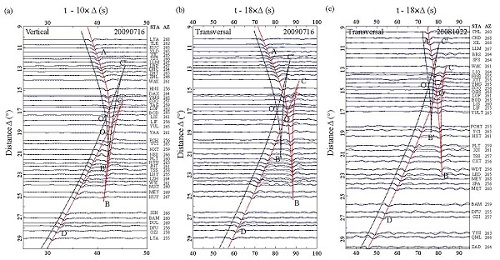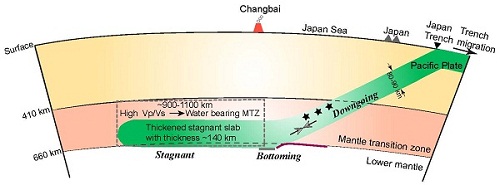Vice Professor LI Juan and her team investigate both S and P wave velocity structures in the mantle transition zone beneath Northeast China and northern part of North China Craton, where the northwestern Pacific plate is imaged to subhorizontally lie above the 660-km discontinuity, using high-dense regional body waves for three deep earthquakes that occurred around Russia–China border.
Their result supports the scenario of a viscosity-dominated stagnant slab with an increased thickness of ~140 km, which was caused by the large viscosity contrast between the lower and upper mantles. The addition of water and eastward trench retreat might facilitate stagnation of the subducting Pacific slab beneath Northeast China.

Fig. 1. Comparison of the observed (black solid line) and synthetic (blue dashed line) waveforms for three events. (Image by LI)

Fig.2. A schematic map showing major features of the upper mantle structure and the subducting Pacific slab inferred from simultaneously P and SH waveform modeling. (Image by LI)
Li et al. P and SH velocity structure in the upper mantle beneath Northeast China: Evidence for a stagnant slab in hydrous mantle transition zone. Earth and Planetary Science Letters, 2013, 367: 71-81(Download Here)